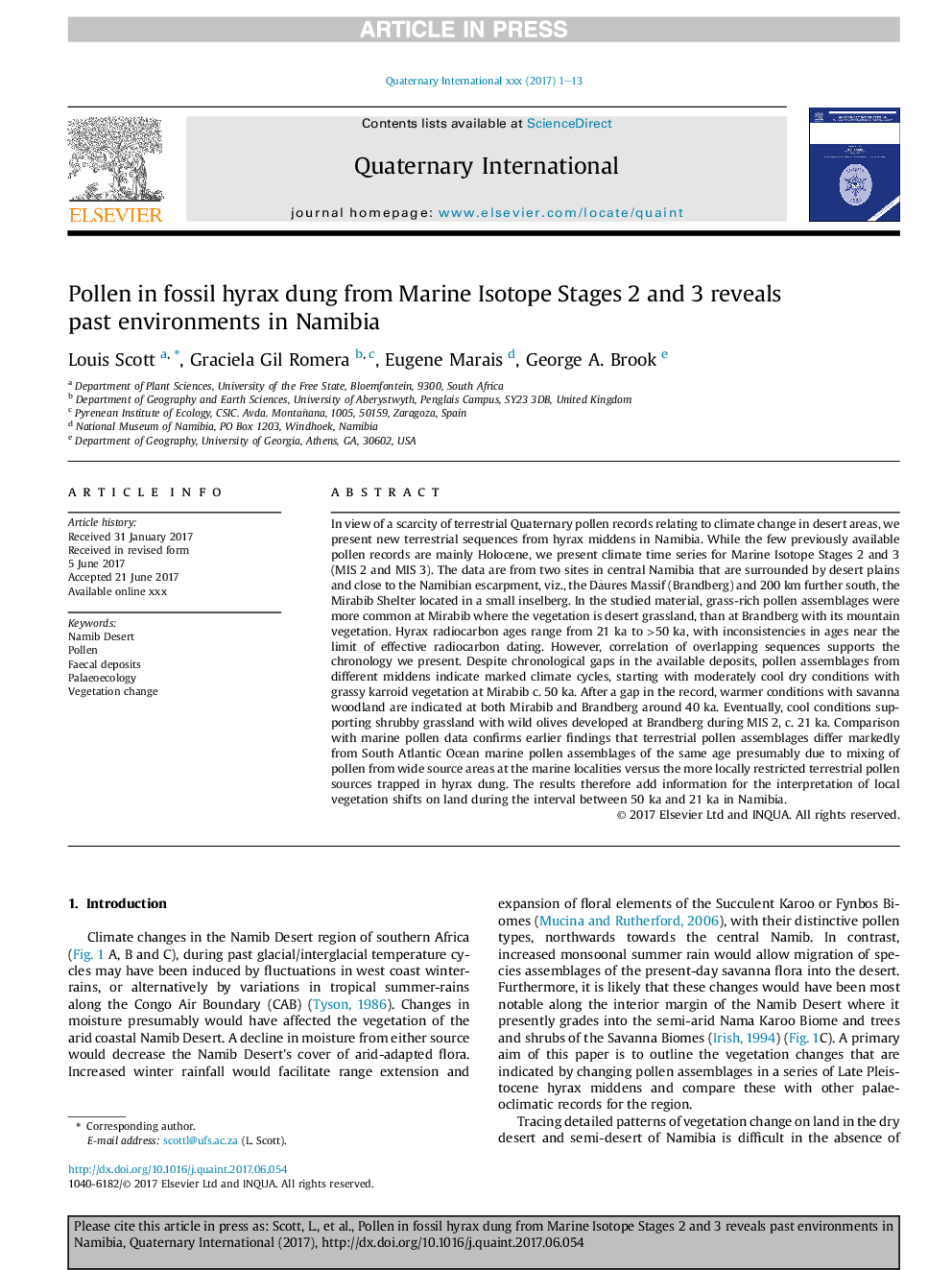| کد مقاله | کد نشریه | سال انتشار | مقاله انگلیسی | نسخه تمام متن |
|---|---|---|---|---|
| 7450969 | 1484058 | 2018 | 13 صفحه PDF | دانلود رایگان |
عنوان انگلیسی مقاله ISI
Pollen in fossil hyrax dung from Marine Isotope Stages 2 and 3 reveals past environments in Namibia
ترجمه فارسی عنوان
گرده در خاکهای فسیلی اکساک از ایزوتوپهای دریایی مرحلههای 2 و 3 فضای گذشته در نامیبیا را نشان میدهد
دانلود مقاله + سفارش ترجمه
دانلود مقاله ISI انگلیسی
رایگان برای ایرانیان
کلمات کلیدی
موضوعات مرتبط
مهندسی و علوم پایه
علوم زمین و سیارات
زمین شناسی
چکیده انگلیسی
In view of a scarcity of terrestrial Quaternary pollen records relating to climate change in desert areas, we present new terrestrial sequences from hyrax middens in Namibia. While the few previously available pollen records are mainly Holocene, we present climate time series for Marine Isotope Stages 2 and 3 (MIS 2 and MIS 3). The data are from two sites in central Namibia that are surrounded by desert plains and close to the Namibian escarpment, viz., the Dâures Massif (Brandberg) and 200 km further south, the Mirabib Shelter located in a small inselberg. In the studied material, grass-rich pollen assemblages were more common at Mirabib where the vegetation is desert grassland, than at Brandberg with its mountain vegetation. Hyrax radiocarbon ages range from 21 ka to >50 ka, with inconsistencies in ages near the limit of effective radiocarbon dating. However, correlation of overlapping sequences supports the chronology we present. Despite chronological gaps in the available deposits, pollen assemblages from different middens indicate marked climate cycles, starting with moderately cool dry conditions with grassy karroid vegetation at Mirabib c. 50 ka. After a gap in the record, warmer conditions with savanna woodland are indicated at both Mirabib and Brandberg around 40 ka. Eventually, cool conditions supporting shrubby grassland with wild olives developed at Brandberg during MIS 2, c. 21 ka. Comparison with marine pollen data confirms earlier findings that terrestrial pollen assemblages differ markedly from South Atlantic Ocean marine pollen assemblages of the same age presumably due to mixing of pollen from wide source areas at the marine localities versus the more locally restricted terrestrial pollen sources trapped in hyrax dung. The results therefore add information for the interpretation of local vegetation shifts on land during the interval between 50 ka and 21 ka in Namibia.
ناشر
Database: Elsevier - ScienceDirect (ساینس دایرکت)
Journal: Quaternary International - Volume 464, Part A, 10 January 2018, Pages 260-272
Journal: Quaternary International - Volume 464, Part A, 10 January 2018, Pages 260-272
نویسندگان
Louis Scott, Graciela Gil Romera, Eugene Marais, George A. Brook,
